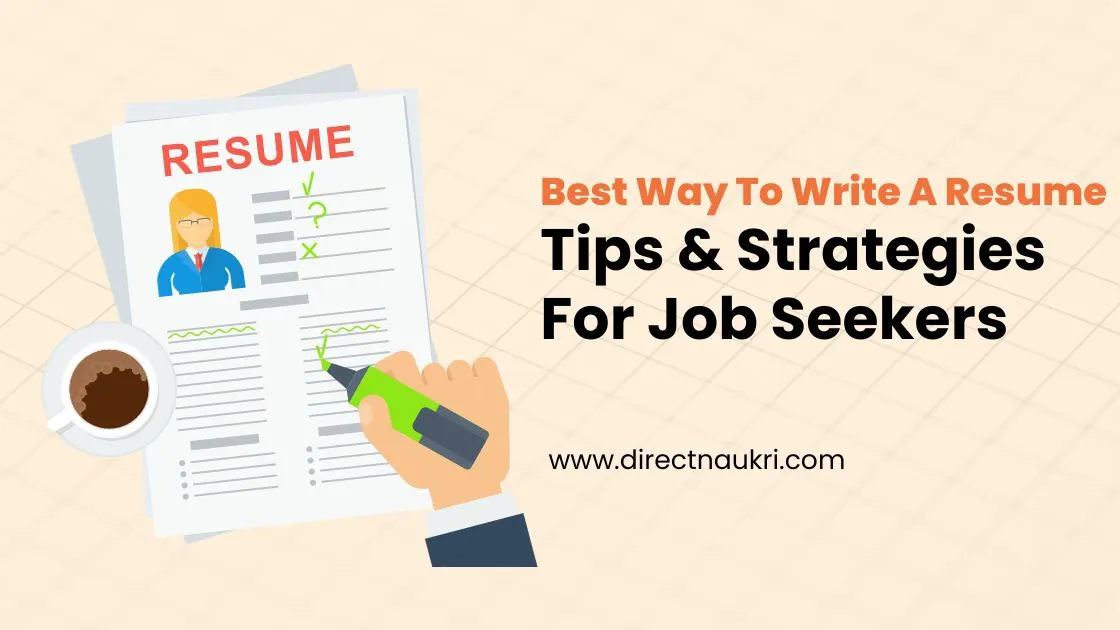Are you looking for your dream job? Landing the perfect job starts with crafting an impressive resume that stands out from the crowd.
Your resume is your first chance to make a great impression on potential employers, so it’s essential to get it right. In this blog post, we’ll provide you with valuable tips and strategies to help you create a resume that highlights your skills, experience, and achievements.
Whether you’re a seasoned professional or just starting your career, these tips will set you on the path to success.

The Purpose of A Resume
Before we dive into the nitty-gritty of resume crafting, let’s understand the purpose of a resume. Your resume serves as a marketing tool to showcase your qualifications and convince employers that you’re the perfect fit for the job.
A well-crafted resume should tell your professional story concisely and effectively, leaving a lasting impression on the hiring manager.
Choosing the Right Resume Format
There are several different resume formats to choose from, each with its own advantages. The most common formats include chronological, functional, and combination resumes.
The key is to select the format that best highlights your strengths and aligns with the job you’re applying for.
Chronological Resume: This format is ideal for job seekers with a stable employment history. It lists your work experience in reverse chronological order, starting with the most recent position.
It showcases career growth and progression, making it suitable for traditional industries.
Functional Resume: If you have gaps in your employment history or are changing careers, a functional resume might be the best option.
It focuses on your skills and abilities rather than specific work experience. Highlight your key skills and accomplishments related to the job you’re applying for.
Combination Resume: The combination resume combines elements of both the chronological and functional formats.
It highlights your skills and achievements while also providing a chronological list of your work experience. This format works well for experienced professionals who want to emphasize their accomplishments.
Also Read: Negotiating Job Offers: Getting the Compensation You Deserve
Sections to Include in Your Resume
To create a comprehensive and well-structured resume, consider including the following sections:
1. Contact Information
Start your resume with your full name, phone number, email address, and LinkedIn profile link. Make sure your contact information is up to date and professional.
2. Professional Summary
Craft a brief summary that captures your career goals and highlights your key qualifications. This section should provide an overview of your skills and experience relevant to the job you’re applying for.
3. Work Experience
Detail your work history in reverse chronological order, starting with your most recent job. Include the company name, job title, dates of employment, and a bulleted list of your key responsibilities and achievements. Use action verbs and quantify your achievements whenever possible.
4. Education
List your educational background, including degrees, certifications, and relevant coursework. Include the name of the institution, the degree earned or program completed, and the dates of attendance.
5. Skills
Highlight your key skills that are relevant to the job. Include both hard skills (technical competencies) and soft skills (interpersonal and communication abilities).Tailor this section to match the requirements mentioned in the job description.
6. Achievements and Awards
If you have received any notable achievements or awards throughout your career, create a section to showcase these accomplishments.
This could include recognition, certifications, or accolades that demonstrate your success and dedication to your field.
7. Additional Sections
Depending on your industry and the job you’re applying for, you may want to include additional sections such as professional memberships, volunteer work, publications, or references.
Only include sections that are relevant and enhance your candidacy.
Tailoring Your Resume to the Job Description
One of the most critical aspects of resume crafting is tailoring your resume to the specific job description. To do this effectively, follow these steps:
Analyze the Job Description: Carefully read through the job description and make a note of the key skills, qualifications, and experience required.
Match Your Skills: Identify the skills you possess that align with the job requirements. Highlight these skills prominently in your resume, particularly in the skills and work experience sections.
Quantify Achievements: Whenever possible, quantify your achievements to provide concrete evidence of your capabilities. Use numbers, percentages, or specific outcomes to demonstrate the impact you made in your previous roles.
Keywords: Many companies now use applicant tracking systems (ATS) to scan resumes for relevant keywords. Sprinkle appropriate keywords throughout your resume to increase the chances of passing through the initial screening process.
Resume Dos and Don’ts
Here are some additional dos and don’ts to keep in mind while crafting your perfect resume:
The Dos:
Do keep your resume concise and focused. Stick to relevant information that demonstrates your qualifications for the job.
Do use professional language and action verbs to describe your responsibilities and achievements.
Do proofread your resume multiple times to eliminate any typos, grammatical errors, or formatting mistakes.
Do customize your resume for each job application to highlight the most relevant skills and experiences.
Do use a clean and easy-to-read font, such as Arial or Times New Roman, in a reasonable size (10-12 points).
The Don’ts:
Don’t include irrelevant personal information like your marital status or date of birth unless required by local laws.
Don’t include references on your resume. Instead, have a separate reference sheet ready to provide upon request.
Don’t fabricate or exaggerate your qualifications or achievements. Be honest and transparent throughout your resume.
Don’t use clichés or generic phrases. Instead, focus on tangible results and specific accomplishments.
Concluding Words
Crafting the perfect resume is a crucial step in your job search journey. It’s your opportunity to showcase your skills, experience, and achievements to potential employers.
By following the tips and strategies outlined in this blog post, you’ll be on your way to creating a resume that stands out from the competition.
Remember to tailor your resume to each job application and highlight your most relevant qualifications. With a well-crafted resume in hand, you’ll be one step closer to landing your dream job.
Frequently Asked Questions
What are the essential components of a winning resume?
A winning resume includes a clear and concise summary, relevant work experience, key skills, education, and any additional certifications or achievements that showcase your qualifications.
How can I tailor my resume for a specific job position?
Study the job description and highlight experiences and skills that directly align with the requirements of the position. Use keywords and phrases from the job listing to make your resume stand out.
Should I include a professional summary or an objective statement?
A professional summary is recommended as it provides a concise overview of your qualifications and career goals. It helps employers quickly understand what you bring to the table.
How far back should I go with my work experience on my resume?
Generally, it’s advisable to include the last 10-15 years of relevant work experience. For earlier roles, focus on highlighting key achievements and skills that are still applicable.
What’s the importance of using action verbs on a resume?
Action verbs add dynamism to your resume. They help convey a sense of accomplishment and capability, making your experiences more impactful to potential employers.







